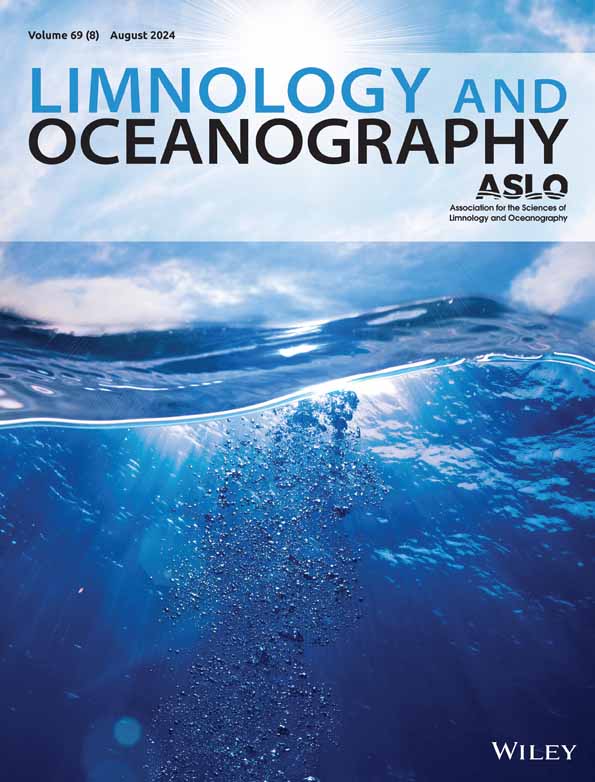Identifying and quantifying unexpected deep zooplankton diel vertical migration in a large deep lake
IF 3.8
1区 地球科学
Q1 LIMNOLOGY
引用次数: 0
Abstract
Diel Vertical Migration (DVM), a widespread zooplankton behavior in freshwater and marine systems, affects ecological interactions and biogeochemical cycles. In lakes, DVM has mainly been studied in the upper 50 m of the water column. However, based on acoustic and net sampling data collected in Lake Geneva, Switzerland (~ 309 m depth) during summer 2022, we demonstrate that DVM occurs down to ~ 125 m depth daily throughout the summer season. The daily descents terminated at around zenith when the Relative Rate of light Change (RRC) was the lowest, and the late afternoon ascent started when RRC values exceeded −0.005 s识别和量化大型深湖中意外的深海浮游动物diel垂直迁移
浮游动物垂直迁移(Diel Vertical Migration, DVM)是淡水和海洋系统中广泛存在的一种浮游动物行为,它影响着生态相互作用和生物地球化学循环。在湖泊中,DVM的研究主要集中在水柱的50m以上。然而,基于2022年夏季在瑞士日内瓦湖(~ 309 m深度)收集的声学和净采样数据,我们证明了整个夏季DVM每天发生在~ 125 m深度。当相对光变化率(RRC)最低时,日下降在天顶附近结束,当RRC值超过- 0.005 s - 1时,日上升开始。DVM迁移下降/上升速率不对称,平均上升速率()比下降速率()快。随着夏季的推进,总体迁移率增加,这与RRC的季节内增加相对应。Cyclops prealpinus丰度与观测到的深DVM相关,其迁移响应外源光信号。这些新发现,也可能与其他深湖相关,表明日内瓦湖的DVM大大超过了以前报道的湖泊的最大迁移深度。因此,研究大型深湖整个水柱浮游动物DVM动态具有重要意义,因为它在缓冲全球气候变化效应中起着重要作用。此外,还建议对目前大型深湖浮游动物DVM采样方案进行相应修改。
本文章由计算机程序翻译,如有差异,请以英文原文为准。
求助全文
约1分钟内获得全文
求助全文
来源期刊

Limnology and Oceanography
地学-海洋学
CiteScore
8.80
自引率
6.70%
发文量
254
审稿时长
3 months
期刊介绍:
Limnology and Oceanography (L&O; print ISSN 0024-3590, online ISSN 1939-5590) publishes original articles, including scholarly reviews, about all aspects of limnology and oceanography. The journal''s unifying theme is the understanding of aquatic systems. Submissions are judged on the originality of their data, interpretations, and ideas, and on the degree to which they can be generalized beyond the particular aquatic system examined. Laboratory and modeling studies must demonstrate relevance to field environments; typically this means that they are bolstered by substantial "real-world" data. Few purely theoretical or purely empirical papers are accepted for review.
 求助内容:
求助内容: 应助结果提醒方式:
应助结果提醒方式:


